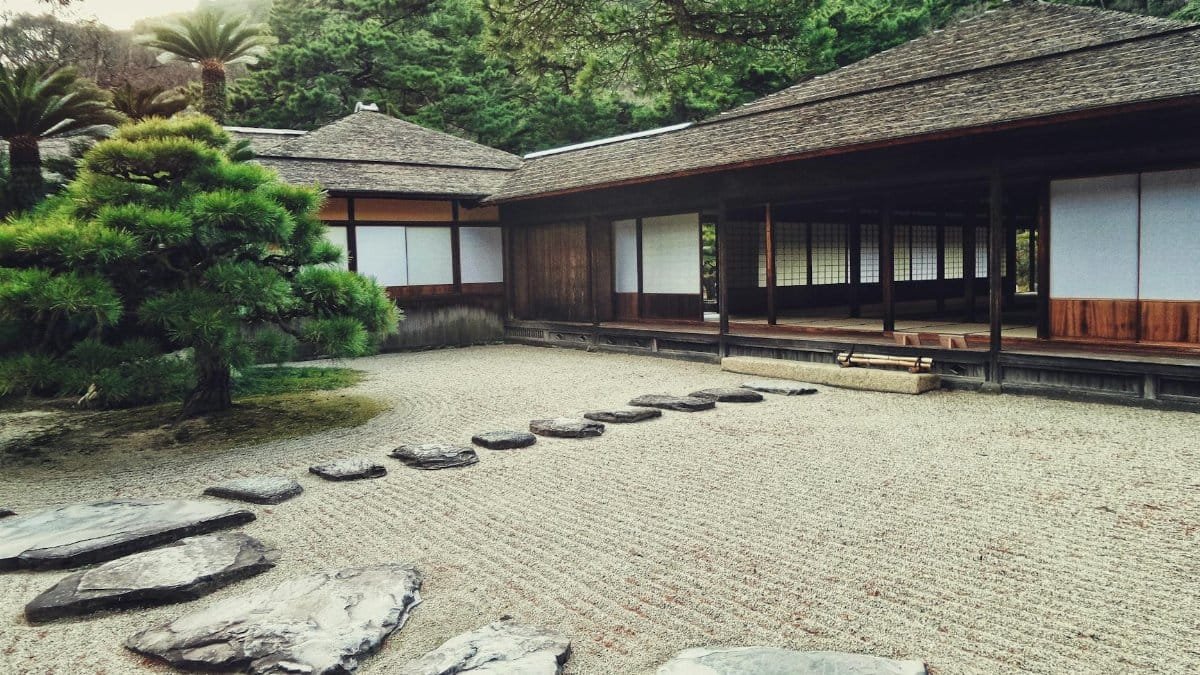Is zen design peaceful home really the solution everyone claims? As stress levels soar in 2025, more Americans are turning to ancient wisdom for relief, seeking serenity in their living spaces. Inspired by Zen monasteries, where minimalism and mindfulness shape every corner, this approach to design promises calm amid chaos. With intentional choices, anyone can transform their home into a sanctuary. Here are seven actionable design tips rooted in Zen principles to help you craft a space that soothes the soul and sharpens focus.
1. Embrace Radical Simplicity

Zen monasteries strip spaces to essentials, and you should too. Clutter breeds distraction, so start by decluttering ruthlessly. Keep only items that serve a purpose or spark joy. A study from UCLA found that visual clutter increases stress hormones like cortisol, especially in women ( UCLA Newsroom ). Store essentials out of sight, and let empty space breathe. A bare tabletop or an uncluttered shelf isn’t empty—it’s an invitation to peace.
2. Prioritize Natural Materials

Wood, stone, and bamboo dominate Zen spaces for a reason. These materials ground a room, connecting it to nature. Swap synthetic decor for a wooden coffee table or stone accents. Research from the University of British Columbia shows exposure to natural materials can lower blood pressure and anxiety ( UBC News ). Texture matters—rough, unpolished surfaces remind us of the earth. Keep it raw and real for that zen design peaceful home vibe.
3. Let Light Lead the Way

Zen monasteries maximize natural light to create a sense of openness. Ditch heavy curtains for sheer fabrics or none at all. Position furniture to catch morning rays, and use mirrors to bounce light into darker corners. Soft, diffused light calms the mind, mimicking the gentle glow of a temple. If natural light is scarce, opt for warm-toned bulbs over harsh fluorescents. Illumination isn’t just functional—it’s a mood setter.
4. Create Intentional Empty Spaces

In Zen design, emptiness isn’t a flaw; it’s a feature. Monks call it “ma,” the space between things that allows for reflection. Resist the urge to fill every nook. Leave a wall bare or a corner free of furniture. This void gives your eyes—and mind—a place to rest. In a culture obsessed with stuff, this act of restraint feels radical but delivers instant calm.
5. Mute the Color Palette

Flashy hues have no place in a Zen-inspired home. Stick to neutrals—think beige, soft gray, or muted greens. These tones echo the natural world, from sandy riverbeds to misty mountains. Bright colors stimulate, while subdued shades soothe. Paint walls in matte finishes to avoid glare, and layer textures instead of colors for depth. A quiet palette sets the stage for tranquility.
6. Incorporate Nature Indoors

Zen spaces blur the line between inside and out. Bring in plants like bonsai or simple ferns to mimic a monastery garden. A single potted plant can shift a room’s energy. Place it where you’ll see it often—near a workspace or by a window. If greenery isn’t your thing, a small indoor fountain can replicate the calming sound of water. Nature’s presence resets the mind.
7. Design for Mindfulness

Every element in a Zen monastery supports focus, so curate your space with intention. Create a dedicated spot for meditation or quiet thought—a cushion by a window or a low table for tea. Remove distractions like buzzing electronics from key areas. Make movement deliberate; arrange furniture for easy flow without obstacles. When your home supports mindfulness, stress has no foothold. This is the heart of a zen design peaceful home.
